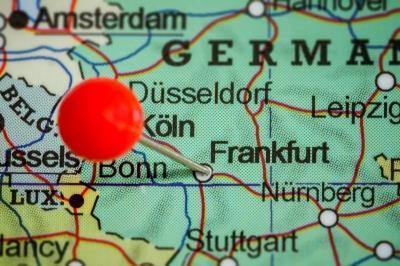Dubbed as one of the biggest and most challenging construction jobs in Europe, The Squaire project faced several risks which delayed the build by two years. Here are the lessons that can be learnt

When German property investment group, IVG Immobilien, announced in 2006 it would launch the project that would become known as The Squaire, it was immediately seen as one of the biggest – and most challenging – construction jobs in Europe.
A so-called Work City, it was a daring structure with a swooping roof that would rise nine stories above Frankfurt’s main international high-speed railway station and stretch 660m metres along it. Indeed the building would be twice as long as the Eiffel Tower is tall. In its 140,000 square metres of lettable space would be accommodated hotels, offices and shops, all within a few minutes walk from Frankfurt International Airport.
“It’s the place to be,” declared the property group. Indeed it was already signing up blue-ribbon tenants.
Logistics
By any standards the logistics of the operation were daunting. All the materials and components including the 20,000 tonnes of steel and 2000 glass panes making up the 145,000 square metre façade had to be delivered in a just-in-time format in a location with practically no space for storage, and without disturbing traffic on two of the busiest freeways in Europe.
Initially known as the AirRail Centre, the project was budgeted at an all-up cost of €660m, with IVG holding 80 per cent and the Frankfurt Airport group the rest in a joint venture. Construction began in 2007 on a pressure-cooker deadline of just two years, in part because IVG was financing it all on debt and anxious to get in tenants. German construction group Ed. Zublin, a veteran of big-ticket international projects, was contracted to erect the exterior. The architect, JSK Architekten, was also German.
Weather
All too soon however, things started to go wrong. Hostile weather caused delays, even though construction was on a double-shift, seven-day schedule. Next the vast consignment of Chinese-made steel was found to be sub-standard and had to be returned after a lengthy legal wrangle. Around the same time the escalators, also from China, proved defective and were also sent back.
As the exterior of the building rose higher above the railway station, engineers ran into grave difficulties with the glass roof that had already been dubbed the “surfboard”. So far did it overhang the walls that it could be properly anchored to the underlying structure.
“The main challenge for the structural engineers was to apply the load of the building to the bearing points designed for the existing structure,” commented at the time Thomas Geppert, project manager for structural analysis at engineering consultancy König & Heunisch Planungsgesellschaft that was brought into the project. In technical terms, the geometry of these support points – so-called fish-belly girders – did not match up with the grid of the superstructure.
Extensive bracing was required but the options for doing the strengthening were “extremely limited.” At the price of extra costs and more delays, a solution was eventually found.
Budget
The budget was now blowing out, although IVG Immobilien’s annual reports did not mention it – or indeed any other difficulties. By 2009, the cost was heading towards €1bn and the group’s bankers were growing restless. Although IVG had signed up anchor tenants in KPMG, Lufthansa and Hilton hotels, roughly a third of the building was still unlet.
The Squaire was finished in 2011, nearly two years behind schedule. By then it had cost €1.3bn while having a valuation of €500m less. In 2013, swamped by debt, the group became insolvent. All creditors were wiped out, €2.2bn in debt was written off, leaving a further €3.2bn in debt.
“Fantastic building but an economic catastrophe,” commented a banker privately.
After much angst a much slimmed-down IVG Immobilien emerged from insolvency in 2013, with its main shareholders being hedge funds. The group narrowly avoided a fire sale in late 2014 courtesy of a €470m, five-year refinancing package arranged by Bank of America Merrill Lynch.
With its travails behind it, The Squaire is now IVG Immobilien’s main asset. Even better, with nearly all of it let, the building is earning money for the revived group. It’s undoubtedly seen as one of Europe’s most impressive commercial buildings – and it has finally become “the place to be.”




















No comments yet